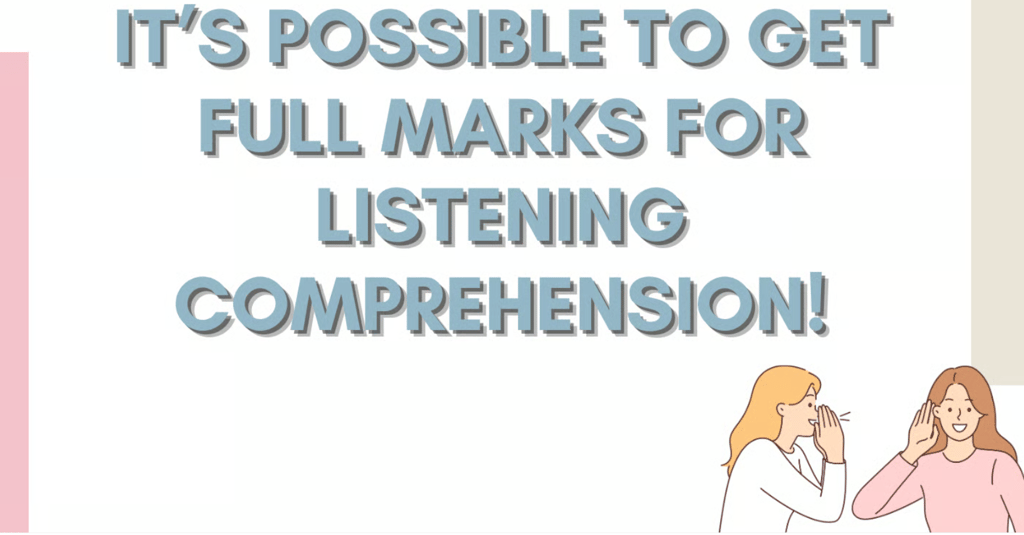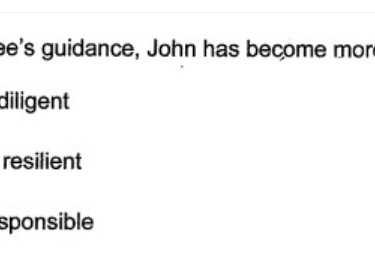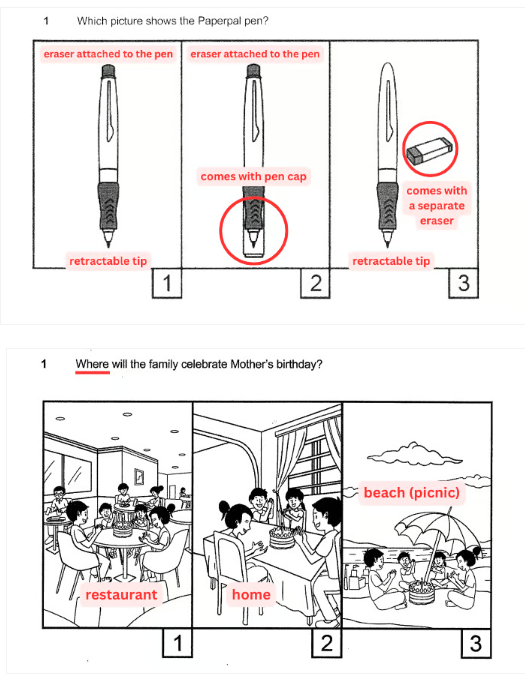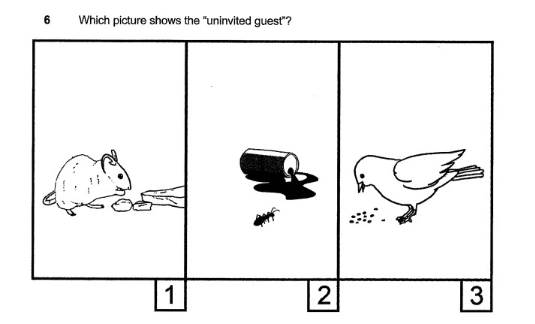PSLE Listening Comprehension: 7 Examination Tips to Ace the Paper
LISTENING COMPREHENSION
6/12/20254 min read


Are you ready to ace your Listening Comprehension exam? The PSLE English Paper 3 tests your ability to listen attentively and understand spoken English. Having a game plan in place will help you stay calm and focused. Here are some practical tips to help you maximise your performance on the day of the exam!
1. Read the Questions Before Listening to the Audio Clips
Before each audio clip begins, you’ll have time to read the questions related to that listening text. Use this time wisely! Reading the questions beforehand helps you understand what to listen for and mentally prepares you for the information that will be presented. This simple step can significantly improve your comprehension and help you identify key details as you listen.
2. Underline Question Keywords and Listen for Them
As you read the questions, underline or highlight important keywords that tell you what the question is asking. While listening, you can also jot down keywords you hear, especially those that match the ones you underlined in the question. This will help you stay focused and ensure you catch the details that matter.
For example, look at this question:


You can underline keywords in the question like “Mrs Tania Lee’s guidance” and “John”. Then, underline the key adjectives given in each option.
When the audio plays, keep your ears tuned to these specific words and any related phrases.
Note that the exact words like “confident” or “resilient” may not be used in the recording. Instead, these ideas could be expressed in a different way. For instance, the adjective “resilient” could be conveyed via the phrase “Mrs Lee taught me not to give up easily.”
3. Identify Key Details and Differences in Question Pictures
The questions for Texts 1-3 come with options that are presented in the form of pictures. It’s important to note the major or subtle differences between them. Before the recording begins, carefully examine these pictures and mark out the key differences in the pictures.
Here are some examples of what you can look out for:


Jotting down these keywords will help you to focus on what to listen for during the recording and choose the correct answer.
4. Take Note of Inferential Questions
Not all questions will ask for direct information. Some may require you to infer or make logical guesses based on the details provided. These inferential questions might ask you about a character’s intention or the moral of the story.
To tackle these, listen for clues that suggest something beyond what’s directly stated. Combining these clues with your own general knowledge and understanding can help you answer these questions accurately.
Here’s an interesting question that came out in 2023 PSLE Listening Comprehension:


Extract from the Listening Text:
You’re right! Besides, I wouldn’t want any “uninvited guest” swooping down on my food.
Here, the answer is not directly mentioned in the recording. However, the keyword “swooping” tells us what kind of an animal the “uninvited guest” should be.
Swooping: (especially of a bird) move rapidly downwards through the air
With that, we’ll be able to identify the correct answer - (3).
5. Do Not Rush – Continue Listening Even If You Think You Know the Answer
It’s tempting to stop paying attention once you think you’ve heard the answer, but this can be a mistake. Even if you feel confident, keep listening closely until the end of the recording. There might be additional details that change the context or suggest a different answer. For example, the speaker may say something but change their mind later on.
Here’s an example from 2022 PSLE Listening Comprehension:
Question: What is the most difficult part of a zookeeper’s job?
(1) increasing the appetite of a sick animal
(2) noticing when an animal is unwell
(3) feeding an ill animal its medicine
Extract from the Listening Text:
TV Host: What is a challenging part of your work?
Zookeeper: It’s when an animal falls ill. They can’t tell us when they are unwell, so we need to have a keen eye to spot any changes in their behaviour, for example, a loss of appetite. Feeding them medicine is especially challenging — the animals are so smart; they know when we have mixed the medicine with their food. We know it doesn’t taste nice but we need them to eat it so that they can get better.
Impatient students may be tempted to choose Option 2 (noticing when an animal is unwell) right away. However, the key detail “Feeding them medicine is especially challenging” which is mentioned in the later part of the recording suggests that the answer should be Option 3 instead.
As such, staying attentive throughout ensures that you capture the complete information needed for a correct response.
6. Check Answers During the Second Playback
During the second playback of the recording, use this opportunity to verify your answers. Don’t just listen to confirm what you’ve already chosen; actively listen for any details you might have missed the first time. This second chance is invaluable in making sure your answer is the best possible choice, so stay alert and compare what you hear with what you’ve already noted down.
7. Stay Calm If You Miss a Detail – Focus on the Next Question
It’s normal to miss a detail or two, and that’s okay! If you find yourself unsure about a question, don’t panic. Move on and focus on the next question. Worrying about what you missed will only distract you and affect your performance on the rest of the exam. Keeping calm and composed will help you recover quickly and continue answering confidently.
Listening comprehension isn’t just about hearing—it’s about being attentive and strategic. By reading the questions first, focusing on keywords, and listening carefully, you can boost your understanding of the audio clips.
Good luck with your PSLE Listening Comprehension exam! Stay positive and focused. You’ve got this!
